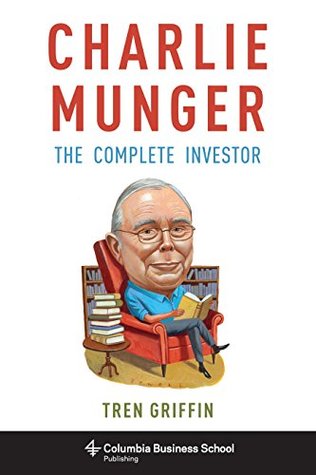More on this book
Community
Kindle Notes & Highlights
A very important test for Buffett and Munger in determining the strength of a brand-based moat is whether a competitor can replicate or weaken the moat with a massive checkbook.
Companies that have been granted a patent, trademark, or other type of intellectual property by the government have in effect been given a legal monopoly. This barrier to entry can create a substantial moat for the owner of the intellectual property.
We just try to operate in a seamless web of deserved trust and be careful whom we trust.
Buffett said at the 2014 Berkshire shareholder’s meeting that if Berkshire has a weakness, it is that they tend to over-trust, but with that comes low overhead. The “seamless web of trust” system is itself part of the Berkshire moat.
That’s why we keep a lot of cash around. … Cash is the equivalent of financial Valium. It keeps you cool, calm and collected.
“Rule No. 1: Most things will prove to be cyclical. Rule No. 2: Some of the greatest opportunities for gain and loss come when other people forget Rule No.
How do you compete against a true fanatic? You can only try to build the best possible moat and continuously attempt to widen it. —CHARLIE MUNGER, POOR CHARLIE’S ALMANACK, 2005
One reason that capitalism works is because moats are hard to create and usually deteriorate over time. What happens over time is that so-called producer surplus is transferred into consumer surplus.
How long your moat lasts is called your competitive advantage period (CAP),
Frequently, you’ll look at a business having fabulous results. And the question is, “How long can this continue?” Well, there’s only one way I know to answer that. And that’s to think about why the results are occurring now—and then to figure out what could cause those results to stop occurring.
Excess cash is an advantage, not a disadvantage. —CHARLIE MUNGER, BERKSHIRE ANNUAL MEETING, 2012
What determines whether a company has a moat is qualitative (e.g., supply-side and demand-side economies of scale, brand, regulation, and intellectual property),
now. To test whether you have a moat with a given company, determine if you are earning profits that are greater than your opportunity cost of capital (OCC). If that level of profitability has been maintained for some reasonable period (measured in years), then you have a strong moat.
At a very practical level, the discussion above illustrates that there are some rules of thumb one can use to test the strength of a moat. At the top of the list is whether the business has pricing power.
there are also three different skills that relate to moats: creating a moat, identifying a moat that others have created, and identifying a startup that may acquire a moat before it is evident.
For investors who buy moats instead of creating one, the existence of a moat has special value because they can sometimes survive financially, even if management talent does not deliver as expected or if they leave the business.
The Graham value investing system can outperform the market over the long term, but only if the investor can do the significant work required to implement the four Graham value investing principles: (1) value shares like a proportional interest in a business, (2) have a margin of safety when purchasing shares, (3) understand Mr. Market is bipolar rather than wise and should be your servant not your master, and (4) be rational. The fourth principle is the hardest of all for investors.
When someone uses book-to-market as a ratio to measure the inexpensiveness of a stock, he or she is effectively saying that there is no difference between a pile of cash in a bank account and an operating company. To such a person, product, customers, production capacity, brand, and operating ability mean absolutely nothing.
Successful Graham value investors view the world in reverse. They are concerned with what a company’s operating characteristics tell you about that company’s likely future cash flows. Companies with greater future cash flows are intrinsically worth more than those with less, regardless of what the book value of the companies may be.
Graham value investors spend a lot of time thinking about return on equity and return on capital. These are the concepts that allow them to differentiate the earnings power of one company versus that of another.


